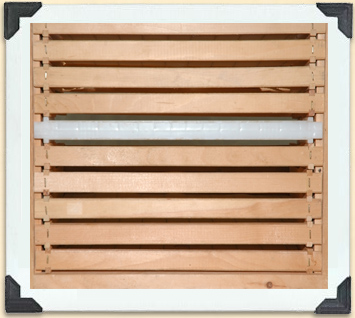Life in a Hive

Bees need bee space (a specific distance between frames) to work efficiently in the hive.
© Canada Agriculture and Food Museum
Langstroth and Bee Space
The commercial beehive used most widely today was invented in 1852 by Reverend Lorenzo Langstroth. The Langstroth hive has movable frames in which the bees build the comb. Others had experimented with movable frames, but Langstroth discovered the exact spacing between all hive parts that would let the bees move around, but would not prompt them to glue everything together with propolis.
Previous hives didn't allow beekeepers to inspect the colonies, and the hives had to be destroyed to collect the honey.




